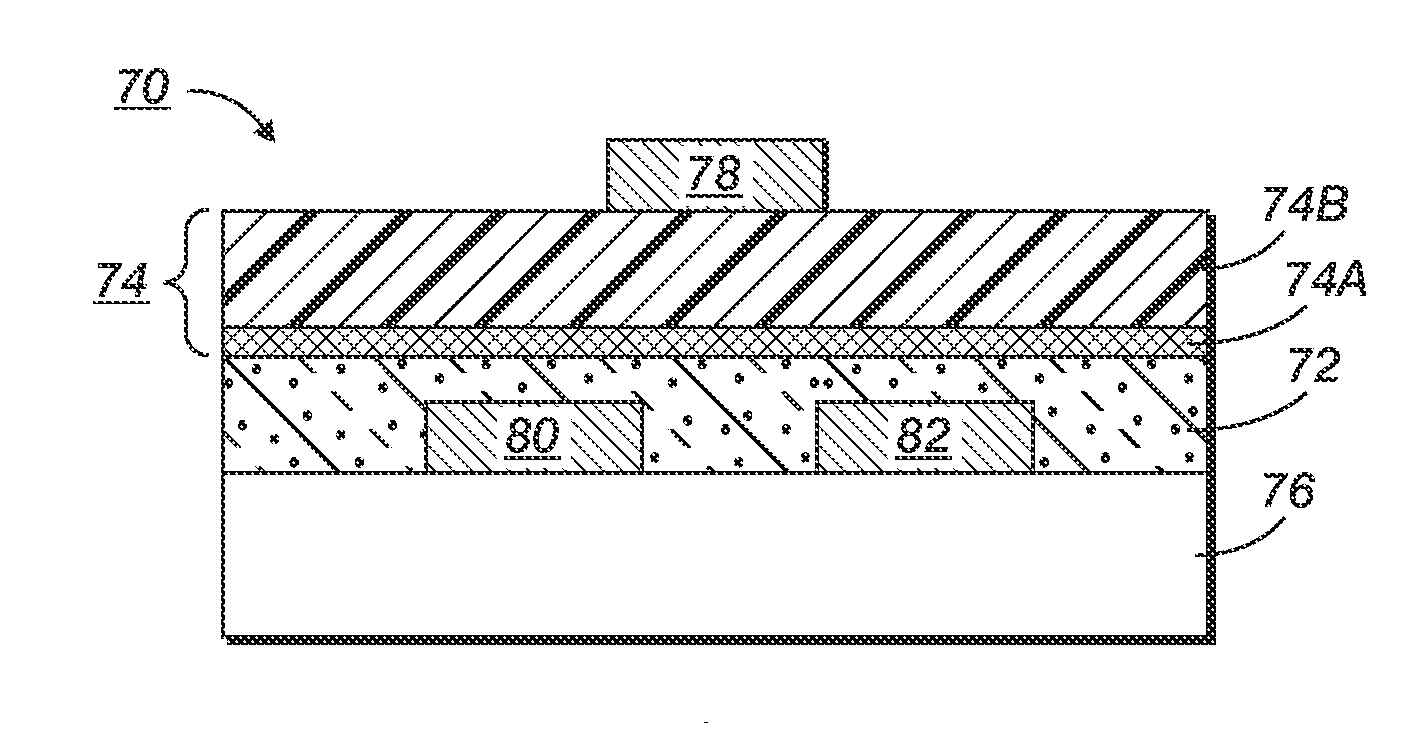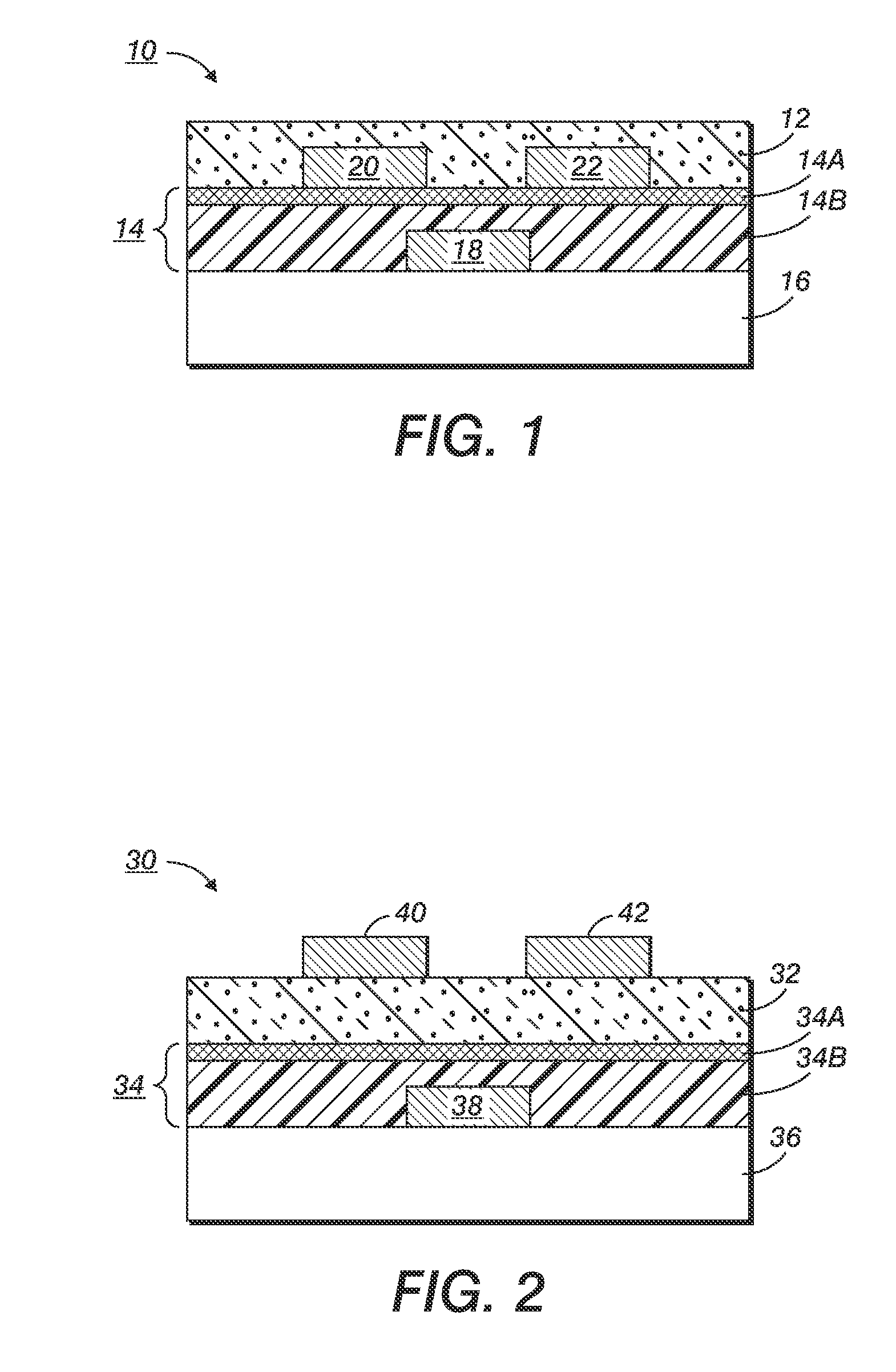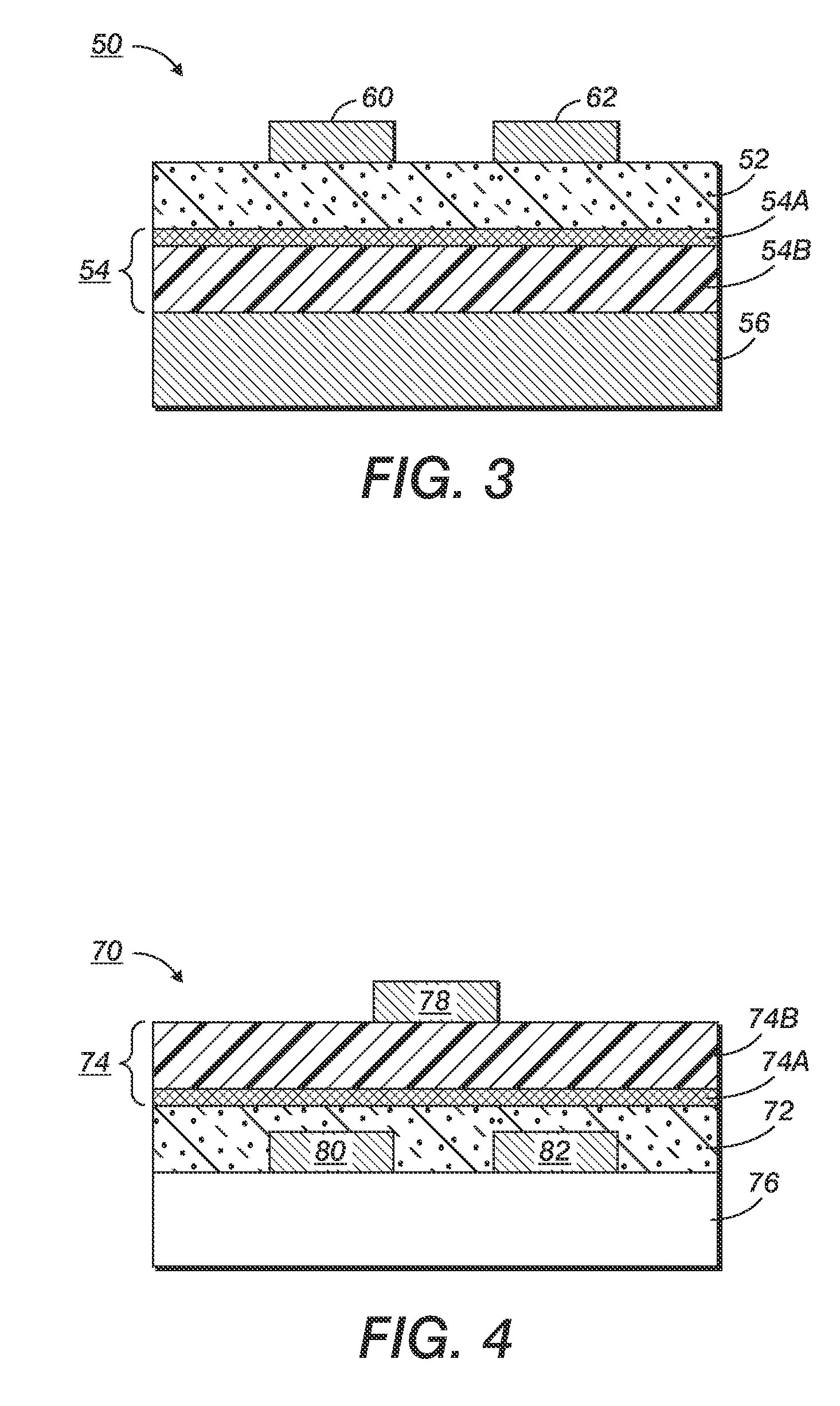TFT fabrication process
a fabrication process and technology of thin film transistors, applied in the field of tft fabrication process, can solve the problems of low cost of silicon-based thin film transistor circuits, low interest in and insufficient attention to other material components such as dielectric materials
- Summary
- Abstract
- Description
- Claims
- Application Information
AI Technical Summary
Problems solved by technology
Method used
Image
Examples
example 1
[0082] In this example, poly(vinyl phenol) (Aldrich, Mw=20,000) was used as an electrically insulating material for the second layer, and poly(methyl silsesquioxane) was used as the material for the first layer. A polythiophene having the following formula was used as the semiconductor:
[0083] where n is a number of from about 5 to about 5,000. This polythiophene and its preparation are described in Beng Ong et al., US Patent Application Publication No. US 2003 / 0160230 A1, the disclosure of which is totally incorporated herein by reference.
[0084] Poly(methyl silsesquioxane) was prepared using methyltrimethoxysilane as precursor according to the following procedure. A mixture of 0.88 grams of aq. 0.1 wt % hydrochloric acid solution and 5.13 grams of tetrahydrofuran was added dropwise to a mixture of 4.08 grams of methyltrimethoxysilane and 9.24 grams of methylisobutylketone in a 3-necked flask cooled with an ice bath over a period of 30 minutes with rigorous stirring under a dry at...
example 2
[0089] In this example, poly(methyl silsesquioxane) was used for the first layer while poly(4-vinylphenol-co-methyl methacrylate) was used for the second layer. Bottom-gate, top-contact OTFTs were fabricated using the same procedure as in Example 1. Thin film transistors with channel lengths of about 60 microns and channel widths of about 1000 microns were used for evaluation. The devices showed field-effect mobility of 0.12 cm2 / V·s and a current on / off ratio of 1.5×105.
example 3
[0090] The preparation of methyl silsesquioxane / zirconium oxide hybrid composition is shown in Scheme 1. A mixture of 0.88 grams of aq. 0.1 wt % hydrochloric acid and 5.13 grams of tetrahydrofuran was added dropwise to a mixture of 4.08 grams of methyltrimethoxysilane and 10 grams of methylisobutylketone in a 3-necked flask cooled with an ice bath with vigorous stirring under a dry atmosphere. The mixture was allowed to warm to room temperature and then heated to 60° C. for 3 hours. Subsequently, a mixture of 80 wt % 6.166 grams of zirconium butoxide and 12.8 grams of tetrahydrofuran was added dropwise over a period of 30 minutes. After addition of 18.0 grams of tetrahydrofuran, the mixture was stirred at 60° C. for 3 hours and then cooled to room temperature before being used in fabricating the dielectric layer.
[0091] Bottom-gate, top-contact OTFTs were fabricated using the same procedure as in Example 1. Poly(vinyl phenol) was used for the second layer, and the methyl silsesquio...
PUM
| Property | Measurement | Unit |
|---|---|---|
| thickness | aaaaa | aaaaa |
| thickness | aaaaa | aaaaa |
| thickness | aaaaa | aaaaa |
Abstract
Description
Claims
Application Information
 Login to View More
Login to View More - R&D
- Intellectual Property
- Life Sciences
- Materials
- Tech Scout
- Unparalleled Data Quality
- Higher Quality Content
- 60% Fewer Hallucinations
Browse by: Latest US Patents, China's latest patents, Technical Efficacy Thesaurus, Application Domain, Technology Topic, Popular Technical Reports.
© 2025 PatSnap. All rights reserved.Legal|Privacy policy|Modern Slavery Act Transparency Statement|Sitemap|About US| Contact US: help@patsnap.com



